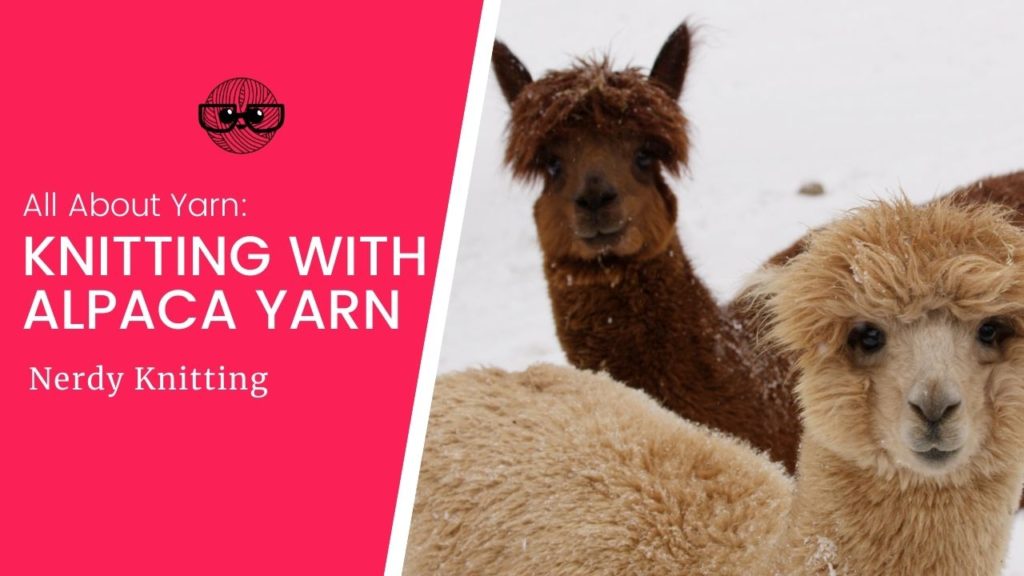Alpaca yarn (and other camelid fibers include camel, llama, and vicuña) and is a beautiful thing to knit with. It’s warm, soft, and lightweight. But there are a few drawbacks that knitters should know about before they choose an alpaca yarn for their next project.
In this article we’ll look at all the facts about knitting with alpaca yarn and take a look at some close relatives to the alpaca – the llama and vicuña.
- All About Alpacas, Llamas, Vicuñas & Camels
- Properties of Alpaca (and Camel, Llama & Vicuña) Yarn
- Knitting with Alpaca (and Camel, Llama & Vicuña) Yarn
- Choosing Knitting Patterns
- Caring for Finished Projects
- Buying Alpaca (and Llama or Camel) Yarns
- More Questions about Alpaca, Camel, Llama & Vicuña Fiber
Let’s take a closer look at each of these areas. Then you’ll know exactly when to choose alpaca yarn or another camelid fiber for your next knitting project.
Some links below are affiliate links. If you click through and make a purchase I may receive a small commission at no extra cost to you. See the disclosure policy for more information.
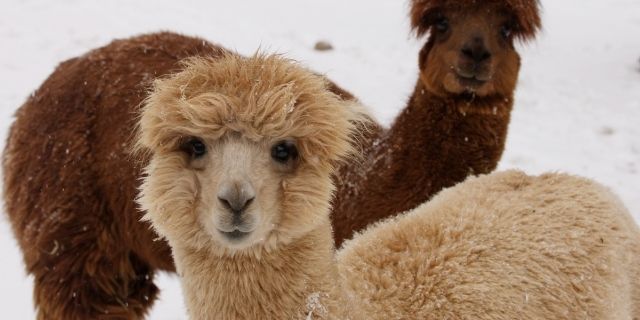
All About Alpacas, Llamas, Vicuñas & Camels
Camels (both dromedary and bactrian), alpacas, llamas, vicuñas, and guanacos are all part of the camelid family – and knit-able fibers are one of the many useful things we can find with the animals within this group.
Alpacas, llamas, and vicuñas (as well as guanacos) are all in the South American camel family. The vicuña is the smallest and lives wild in high altitude areas of Peru and their fiber is highly prized. Llamas are the domesticated (and tallest) cousin that’s often used as a pack animal and, while their softer undercoat is very similar to alpaca, it’s not as popular. Alpacas, also a domesticated animal, specifically bred for their wool (and sometimes mistaken for llamas – even though they are smaller than llamas) have a serious history as a luxury fiber. Along with it’s relative the vicuña, garments made from alpaca and vicuña fibers were used by Incan royalty.
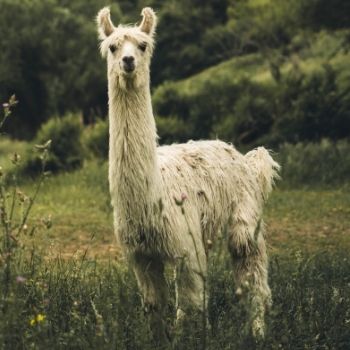
Learn more about the differences between the three animals in this article.
A close relative to the vicuña is the guanaco, which is larger (and also located in South America). It has protected status now since it’s been hunted to near-extinction. It’s also wild, like the vicuña, and very few are domesticated so fiber, especially commercially-available yarn, is extremely rare.
In more recent years, fiber and animal enthusiasts have been developing a combination breed – the Paco-Vicuña – which is a cross between the alpaca (which is the domesticated descendant of the wild vicuña) and the vicuña. The focus is on producing fiber that is as fine and as similar as possible to wild vicuña. While native to South America, they can now be found on small farms throughout North America as well.
You won’t find the Paco-Vicuña yarns used in any major yarn lines (yet!) but, if you’re interested in trying this fiber, you can often buy yarns directly from the farms like this one: Victory Farm in Missouri.
On the other side of the globe (native to Central Asia) we find the wool-producing Bactrian (two-hump) camel. We don’t use the fleece of the dromedary camel for yarn.
Properties of Alpaca (and Camel, Llama & Vicuña) Yarn
All fibers for yarn can be divided into four broad categories – animal fibers (like wool, silk, and alpaca), plant fibers (like cotton and linen), biosynthetic fibers (like rayon and bamboo), and synthetic fibers (like acrylic and nylon). Alpaca, llama, camel and vicuña all fall within the first category – the protein fibers come from each of the animals. It falls within the ‘specialty wool’ category because it’s considered ‘wool’ but it doesn’t come from sheep.

Yarns with alpaca (and llama and vicuña) are soft and luxurious. Alpaca fibers are long, fine, and lustrous and, instead of shearing, the fibers are combed from the animal twice a year. The staples average from 4-8 inches in length. The colors range between various shades of brown to beige and the fiber must be bleached before being dyed.
The two breeds of alpaca are the Huacaya alpaca and the Suri alpaca. Huacaya alpacas account for 90% of the alpaca population and is the most commonly found fiber in yarn blends. But Suri alpaca is the finest grade of the fibers (and if the yarn contains suri alpaca, it will probably state that on the label).
Their close cousin, the llama, has a coarse outer coat with a soft undercoat hidden beneath. This soft undercoat is nearly identical to alpaca (it is slightly less fine). But, because of the llama’s coarser outer coat, alpaca fibers are more highly prized. You’ll find some llama fur in yarn blends though. But, because of its coarse nature, it’s commonly used in ropes and rugs.
Vicuña is very similar to alpaca fiber but there are three factors that cause their yarn to be more expensive and highly sought after. The animals are now a protected species after being hunted to near extinction (thankfully numbers are on the rise again), they are only shorn every three years, and each animal only produces about one pound of wool at their shearing. So if you happen to find vicuña yarn, you’ve found something special.
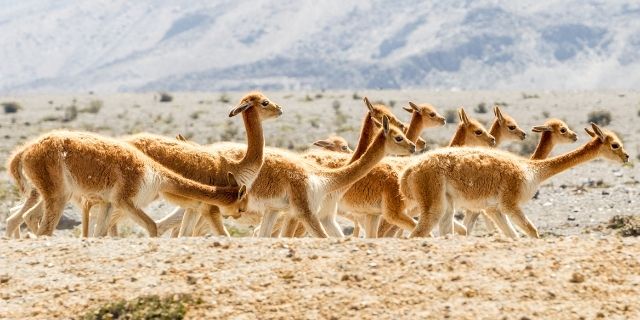
The wool collected from domesticated Bactrian camel has an outer coat of coarse hair (the staple is up to 15 inches in length) and a down under coat (with a staple length of 1-5 inches and just slightly less fine than Merino wool). When the fiber is collected, the two coats must be separated by combing. Camel-fiber yarns is sold un-dyed, in it’s natural shades of brown.
Advantages of Alpaca, Camel, Llama & Vicuña
Alpaca, llama, camel and vicuña all share similar properties. The fibers are hollow which makes them very lightweight. They are also:
- Soft
- Warm & Insulating
- Beautiful drape
- Water resistant
These fibers are also lanolin-free which makes them a great option for those who have skin sensitivities or are sensitive to wool.
It’s important to note that alpaca is quite warm because the hollow core traps air (and makes it even warmer than wool). While that is a nice quality, it makes anything knit in 100% alpaca almost too warm. For this reason, and its major disadvantage discussed in the next section, it’s often blended with wool. It adds wonderful softness, warmth, and drape without being too warm when blended with wool or other fibers. This characteristic is also present in llama and vicuña fibers as well.
Disadvantages of Alpaca, Llama, Camel & Vicuña
These fibers have some definite advantages but there is one disadvantage that knitters need to understand when using these yarns. They have a lack of memory and will sag with time (especially if they are not blended with another fiber that will add some memory).
This is why you’ll often find these yarns in blends with other fibers. Alpaca is commonly blended with wool to improve the memory of the yarn so projects will hold their shape. It’s also combined with silk blends and these yarns are wonderfully soft with gorgeous drape – they really make great hand knit shawls.
Get the Yarn Substitution Checklist
Fill in the form below to get a free copy of the Four Step Checklist for substituting yarn. Use it for your next knitting project!
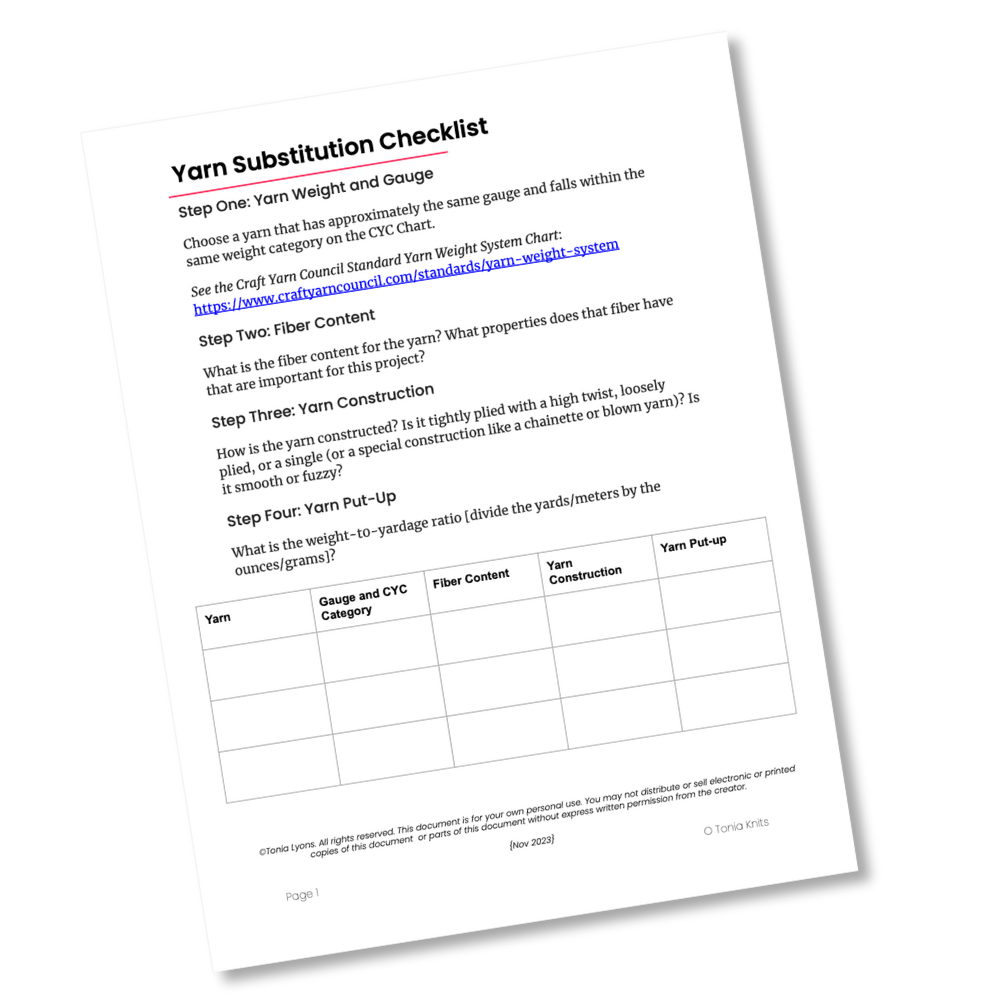
Knitting with Alpaca, Camel, Llama & Vicuña
These fibers feel wonderfully soft to work with – you’ll certainly enjoy handling this yarn as you knit.
Because yarns with alpaca (and llama, camel, and vicuña) are more expensive, those precious skeins are best used for items that will be close to the skin like cowls, hats, mittens, shawls, and, if you have enough yarn, sweaters and cardigans.
If the fibers are not blended with a yarn to add some memory (to help the project hold it’s shape), it works well for those items where drape and lack of memory aren’t an issue – like shawls, wraps, or cowls.
When it’s blended with other yarns (especially wool, which will give it that added memory), the possibilities are endless – knit whatever you want. These fibers lend themselves well to many applications from lace to lightly textured patterns. Cables or highly textured patterns aren’t suitable (unless the fibers are combined with wool) because its lack of memory and the additional yarn needed for highly textured patterns means that the finished garment will probably sag over time from the added weight.
One note of caution – depending on how the fibers are spun, alpaca can feel fuzzy (almost like mohair) and shed small bits of fiber. It’s a good idea to try and handle the yarn personally to see if this will be a concern (something that’s harder to do when purchasing online). You can also get an idea of how fuzzy the yarn is from online pictures before purchasing. Fuzzy yarn has its own difficulties when knitting – it can be hard to unravel your work. So if you think you may ‘frog’ your project – it’s going to be more difficult with a fuzzy alpaca yarn (just something to think about when you’re choosing your knitting projects!).
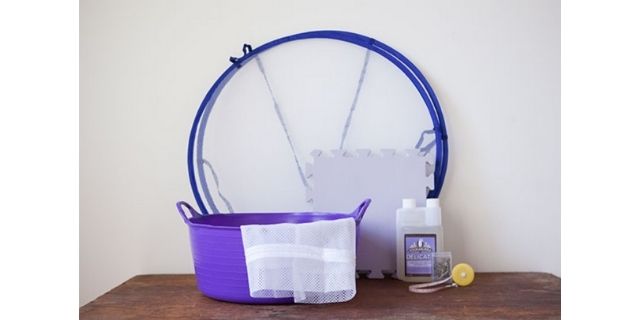
Caring for Finished Projects
Yarns that include these fibers are most likely going to require special care instructions – hand washing and laying flat to dry. But always check the yarn labels to get the specific instructions for your project care.
To hand wash alpaca, llama, camel, or vicuña:
- Add the garment to a basin of cold to room temperature water with a bit of wool wash or very mild detergent.
- Avoid twisting or wringing the garment as you clean any necessary areas and work the suds into the fabric.
- Allow it to soak for twenty minutes (especially if you plan to block the finished garment).
- Drain the water and rinse in cool water to remover the detergent.
- Squeeze out the excess water and place on a towel.
- Roll the towel up to squeeze out as much water as possible.
- Place the garment on a towel or mat, shaping it to it’s finished measurements (or follow the blocking instructions below).
- Leave until it’s completely dry.
Don’t hang projects knit in alpaca. Because it has no memory, the knitted garment will continue to grow and sag with time. Fold and store on a shelf or in a drawer instead.
Blocking Alpaca, Llama, Camel & Vicuña Knitting Projects
In most cases, following the hand washing instructions above are all you need to do (blocking is just caring for your hand knits – it doesn’t always need to involve wires and pins). If your project has some lace or needs to be stretched, use a mat and some pins or blocking wires to shape the piece to its finished measurements. Allow to dry before removing the pins and wires.
Keep in mind that these fibers have little memory so they won’t ‘bounce back’ after blocking.
For a quick refresh, spray blocking is also a good choice (or for very delicate projects – it may be a better choice than wet blocking). Simply place the project on a towel or blocking mat, pinning to shape if necessary. Spray with water until damp and let dry.
Buying Alpaca (and Camel, Llama & Vicuña) Yarns
Alpaca is commonly blended with a variety of other fibers. I’ve divided the list below into a few categories to make searching for yarns a little bit easier.
100% Alpaca Yarn
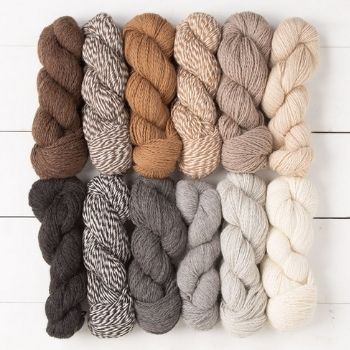
The following yarns are 100% alpaca – for those times when you want a really warm garment.
- Knit Picks Alpaca Cloud DK (also available in Fingering & Lace weights)
- Knit Picks Simply Alpaca Aran
- Knit Picks Andean Treasure
- Plymouth Yarns Baby Alpaca DK (also available in Worsted and Grande weights)
- Cascade Baby Alpaca Chunky
- LB Collection Baby Alpaca
Alpaca & Wool Blends
Alpaca and wool are a natural pairing. Wool is warm, durable, and has good elasticity and memory. Alpaca adds softness, extra warmth, and a beautiful drape.

- Knit Picks City Tweed DK (also available in an Aran weight)
- Knit Picks Wonderfluff (and Wonderfull Ombre)
- Knit Picks Paragon Sport (wool, alpaca, and silk)
- Berroco Ultra Alpaca (also available in Light and Chunky weights)
- Cascade Highland Duo
- LB Collection Fifty Fifty Yarn
Other Alpaca Blends
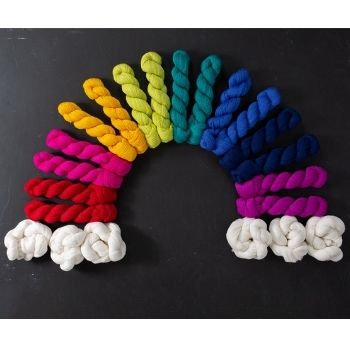
As well as with wool, alpaca can be found in other yarn combinations (alpaca and silk is a beautiful pairing).
- Knit Picks Kindred (alpaca and pima cotton)
- Knit Picks Shimmer Lace (alpaca and silk)
- Patons Alpaca Blend (acrylic, wool, nylon & alpaca)
- Rowan Alpaca Classic (alpaca and cotton)
- Blue Sky Fibers Alpaca Silk
- Berroco Andean Mist (alpaca and silk)
- LB Collection Merino, Yak, Alpaca Yarn
- Lion Brand Touch of Alpaca (acrylic and alpaca)
Llama Yarns
Here are a few selections of llama yarns. Like alpaca, llama is often blended with wool but can also be found in combination with other fibers as well.
- Elsebeth Lavold Luscious Llama (100% llama)
- Cascade Yarns Llama Lace (100% llama)
- Cascade Yarns Andean Dream (llama, wool and nylon)
- Sugar Bush Yarns Dawson (llama and merino wool)
- Cascade Yarns Sorata (llama and silk)
I have not included any vicuña yarns because they are difficult to find. If you do an internet search you may find something that interests you. I’ve done a search and found a $300 skein of lace weight yarn (217 yards). It’s certainly fascinating to see how prized and expensive this fiber can be!
Camel Yarns
While camel is more difficult to find, there are some options available. You’ll often find it blended with wool but you’ll sometimes find other fibers there as well. Here are a few camel yarns to try:
- Lion Brand LB Collection Merino Camel Yarn (merino wool & camel)
- Willow & Lark Poetry (merino wool, microfibre & camel)
- Berroco Nomad (merino wool and camel)
- Lang Yarns Oslo (cotton, merino wool and camel)
- Rowan Camel (wool, camel and nylon)
More Questions about Alpaca, Camel, Llama & Vicuña Yarns
Here are some quick questions and answers related to alpaca, llama, and vicuña yarns.
Does alpaca yarn shrink when washed?
Alpaca (as well as llama and vicuña) should be hand washed in cold to lukewarm water. It will shrink if it’s placed in a washing machine as the combination of water and agitation will cause it to felt. While it doesn’t felt as much as wool, it is still a natural animal fiber with some scales – and those scales can stick together and felt under the right conditions, causing your project to shrink.
Is alpaca the warmest wool?
Because of its hollow core that allows heat to be trapped within the fibers, alpaca is warmer than sheep’s wool. Llama and vicuña fibers are also very warm because they share a similar fiber construction to alpaca. But Qiviut is the warmest. It’s eight times warmer than sheep’s wool.
What is the most expensive wool?
Vicuña wool is the most expensive because of four factors. The animals are a protected species after being hunted to near extinction, they are not domesticated, they are only shorn every three years, and each animal only produces about one pound of wool at their shearing. These facts make it the most expensive wool available.
Is camel yarn soft?
The soft under coat of the wool-producing Bactrian camel is very soft, with a staple length of 1 – 5 inches and averages 20 microns in diameter, just slightly less fine than Merino wool.
More About Yarns & Fibers
- The Knitter’s Book of Yarn by Clara Parkes (available at Amazon)
- Yarn Substitution Made Easy by Carol J. Sulcoski (available at Amazon)
- The Fleece & Fiber Sourcebook by Carol Ekarius & Deborah Robson (available at Amazon)
- Alpaca Knit Sweaters by Dorthe Skappel (available at Amazon)
Related Knitting Articles
- Yarn 101: Knitting with Plant Fibers
- Knitting Cashmere Yarn: What You Need to Know
- What You Need to Know about Knitting Mohair Yarn
